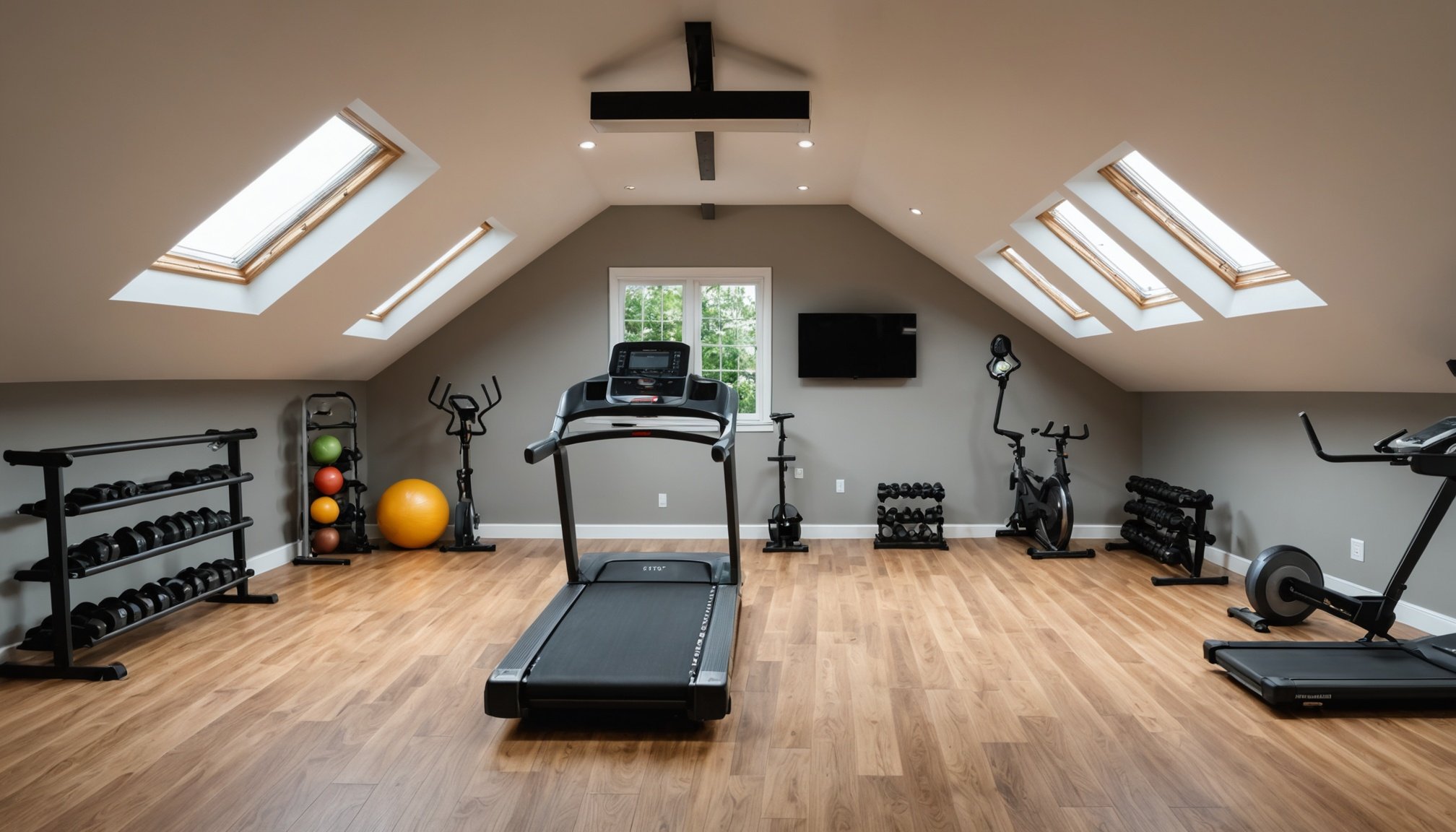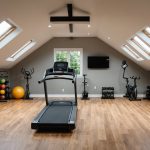Transforming Your Unused Attic in Cambridge: Essential Tips for Building the Perfect Home Gym
Why Consider a Loft Conversion for Your Home Gym?
When it comes to creating the perfect home gym, one of the most overlooked yet valuable spaces in your home is the attic or loft. In Cambridge, where living space is often at a premium, converting your loft into a functional area can be a game-changer. A loft conversion not only adds significant value to your property but also provides an ideal setting for a home gym, away from the hustle and bustle of daily living.
Understanding Loft Conversions
Before diving into the specifics of creating a home gym, it’s essential to understand what a loft conversion entails. A loft conversion involves transforming the unused space in your attic into a fully functional room. This can include anything from a simple storage area to a luxurious living space, and in this case, a dedicated home gym.
Lire également : Top Strategies for Managing Slugs in Your UK Organic Garden: Effective Solutions for a Flourishing Space
Companies like The Loft Converter, established in 2008, have set high standards for loft conversions, earning a reputation for quality and customer satisfaction[2].
Assessing Your Loft’s Potential
Evaluating Space and Structure
The first step in any loft conversion project is to assess the potential of your loft space. Here are some key factors to consider:
A lire également : What are the best materials for a durable driveway in a Scottish Highland home?
- Headroom: Ensure there is enough headroom to stand comfortably. A minimum of 2.3 meters is generally recommended.
- Structural Integrity: Consult with a conversion specialist to determine if your loft’s structure can support the weight of additional flooring, insulation, and any equipment you plan to install.
- Natural Light: Consider how much natural light your loft receives. If it’s limited, you may need to install skylights or larger windows.
Initial Consultation
An initial consultation with a conversion specialist is crucial. They will help you understand your loft’s potential, discuss your expectations, and outline the scope of the project. Here’s what you might expect from this consultation:
- Detailed assessment of your loft space
- Discussion of your needs and expectations
- Overview of the conversion process
- Preliminary cost estimates
- Advice on planning permission and building regulations
Planning and Design
Planning Permission and Building Regulations
Not all loft conversions require planning permission, especially if they fall under Permitted Development Rights. However, it’s always best to check with local authorities to ensure compliance. In Cambridge Heath E2, for example, many loft conversions can be carried out without needing planning permission[4].
Building regulations, however, are always applicable and ensure that the conversion meets safety and structural standards.
Designing Your Home Gym
When designing your home gym, consider the following elements:
- Layout: Plan the layout to maximize space. Consider a mirrored wall to create the illusion of more space.
- Lighting: Ensure adequate lighting. Natural light is ideal, but if this is limited, invest in high-quality LED lighting.
- Ventilation: Proper ventilation is crucial for a gym. Ensure there are adequate windows or install a ventilation system.
- Flooring: Choose flooring that is durable and easy to clean. Rubber flooring or interlocking mats are excellent options.
Here’s a detailed list of considerations for designing your home gym:
- Equipment Placement: Position equipment to allow for easy movement and access.
- Storage: Include storage solutions for weights, mats, and other gym accessories.
- Soundproofing: If you plan to use loud equipment or play music, consider soundproofing to avoid disturbing other living areas.
- Electrical Outlets: Ensure there are sufficient electrical outlets for all your equipment.
- Aesthetics: Choose colors and decor that motivate and inspire your workouts.
Execution and Construction
Choosing the Right Contractor
Selecting the right contractor is pivotal to the success of your project. Here are some tips for choosing a reliable contractor:
- Get Multiple Quotes: Obtain written quotes from at least three potential contractors, outlining the scope of work and all costs involved[3].
- Check Reviews: Look for contractors with a strong reputation and positive reviews.
- Verify Credentials: Ensure the contractor has the necessary qualifications and experience in loft conversions.
Construction Process
The construction process typically involves several stages:
- Preparation: Clearing the loft space, inspecting for any structural issues.
- Insulation: Installing insulation to ensure the space is energy-efficient and comfortable.
- Flooring: Laying down the flooring, whether it's wooden, carpeted, or rubber.
- Electrical and Plumbing: Installing any necessary electrical outlets, lighting, and plumbing.
- Finishing Touches: Painting, decorating, and adding any final touches.
Adding Value to Your Property
A well-executed loft conversion can significantly add value to your property. Here’s how:
Increased Living Space
By converting your loft, you are essentially adding a new room to your home, which can be a major selling point.
Enhanced Aesthetics
A beautifully designed loft space can enhance the overall aesthetics of your home, making it more appealing to potential buyers.
Functional Use
A home gym is a unique and desirable feature that can set your property apart from others in the market.
Here is a comparative table highlighting the benefits of a loft conversion:
| Benefit | Description |
|---|---|
| Increased Living Space | Adds a new room to your home |
| Enhanced Aesthetics | Improves the overall look and feel of your home |
| Functional Use | Provides a unique and desirable feature like a home gym |
| Value Addition | Significantly increases the value of your property |
| Energy Efficiency | Proper insulation can make the space energy-efficient |
Practical Insights and Actionable Advice
Budgeting and Cost Management
Budgeting is a critical aspect of any conversion project. Here are some tips to manage costs effectively:
- Set a Realistic Budget: Based on your quotes and consultations, set a realistic budget and stick to it.
- Prioritize: Prioritize your needs over your wants to stay within budget.
- Contingency Fund: Always have a contingency fund for unexpected expenses.
Managing the Process
Managing the conversion process can be stressful, but here are some tips to make it smoother:
- Communicate Clearly: Maintain clear communication with your contractor to ensure your expectations are met.
- Plan Ahead: Plan ahead for any disruptions, such as temporary relocation or alternative living arrangements.
- Inspect Regularly: Regularly inspect the work to ensure it meets your standards.
Transforming your unused attic into a home gym is a rewarding project that can add significant value to your property while providing you with a dedicated space for your fitness journey. By understanding the process, planning meticulously, and choosing the right professionals, you can ensure that your loft conversion project is a success.
As a homeowner in Cambridge, investing in a loft conversion is not just about adding a new room; it’s about enhancing your living space, increasing your property’s value, and creating a space that reflects your lifestyle and needs.
In the words of a satisfied client of The Loft Converter, “Our loft conversion has transformed our home. The additional space has given us a new room that we use every day, and it’s added so much value to our property. It was worth every penny!”[2].
So, why not transform your unused attic into the perfect home gym? With the right guidance and planning, you can turn this often-neglected space into a vibrant and functional area that enhances your home and your lifestyle.






